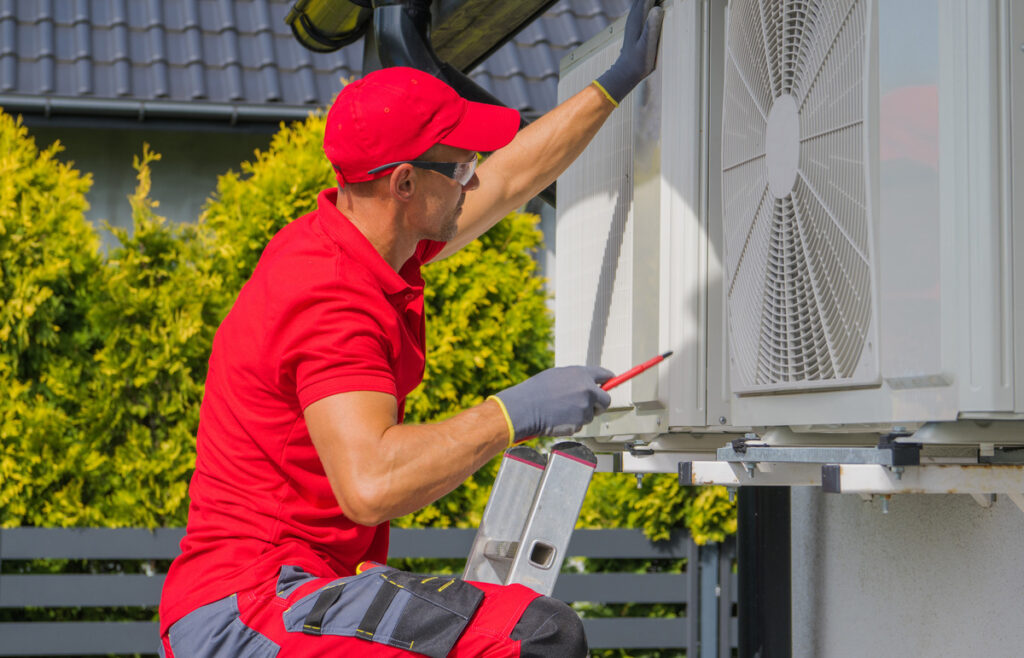
For the most part, your HVAC system does the heaviest lifting during the summer and winter months. While your property still needs it in order to keep visitors and residents feeling comfortable the rest of the year, there’s somewhat of a lull in between.
This is what makes the fall the perfect time to do seasonal HVAC maintenance.
As for what your maintenance plan should entail, keep reading. You’ll find 5 tips and tricks to get your HVAC in good working order before the winter arrives.
5 Commercial HVAC Maintenance Tips for the Fall
There are a number of reasons to do preventative maintenance:
- Keep your heating and cooling systems running well, even in extreme weather.
- Maintain a comfortable and healthy environment for everyone in your building.
- Repair issues early, saving you from dealing with disruptive emergencies.
- Catch and fix energy inefficiencies and lower your monthly overhead.
Here are some things you can do every fall (and spring) to keep your HVAC equipment in good shape:
Tip #1: Adjust Your Thermostats
There are a number of reasons to check your thermostats when the summer ends.
For starters, your facility might not need the same amount of cooling in the fall as it did over the summer. Keeping attuned to the weather outside and how it affects the ambient temperature inside will help you keep your thermostat at a reasonable setting all year round.
Also, thermostats sometimes need recalibration. Checking your thermostat every six months will allow you to notice any issues with the heating and cooling controls. Finding temperature imbalances within your building can also indicate a problem with the thermostat’s controls.
Temperatures can change quite a lot over the course of a season. So, if you find this work tedious, consider investing in a smart thermostat that can automatically keep your internal temperatures at optimal levels.
Tip #2: Inspect Your Insultation
If your thermostat seems to be working just fine, but your building doesn’t feel warm or comfortable enough as the temperatures drop, something else may be going on.
If you’re not in the habit of doing so, inspect your insulation during your seasonal maintenance check-in. Also look for gaps around windows and doorframes. Even the best calibrated thermostat can’t keep air from leaking out if the materials that are supposed to keep it in have weakened or disappeared.
Tip #3: Clean Your Filters
Dirty air filters can be problematic for a number of reasons.
To start, the dirt can clog up your HVAC system, making it work harder. At some point, it’s going to stop working well or altogether. In the meantime, you’ll have to deal with spaces that don’t heat or cool properly. You’ll also see your energy bill shoot up as the system attempts to overcompensate for the clogged filters.
Another reason to keep your filters clean is air quality. While you should be cleaning your filters every month or so, it’s especially important to change them right after or just before a peak season.
Combining a high-quality air filter with something like an air purifier or humidifier can help clean up congested air spaces, too.
Tip #4: Check the Area Around Ducts and Equipment
Over the course of a summer, it’s only natural for things to get moved around within your building. In some cases, the mover may not have noticed that the object in question is blocking a piece of HVAC equipment or duct.
Go around your building and remove anything that’s impeding air flow. While you’re at it, give the equipment and vents a dusting to ensure nothing prevents that warm or cool clean air from getting out into your facility.
Also, take a walk around the outside of your building. Have a look at the external HVAC units (if feasible). It’s only natural for plants to grow, grass trimmings to accumulate, and other debris to gather around these spots over time. Clearing them out will not only improve the functioning of the system, it’ll prevent it from getting clogged and overheated.
Tip #5: Examine the State of Your HVAC Equipment
Another thing to check for as you’re walking around the building is the state of your HVAC equipment and ductwork. Here are some signs they may need to be repaired or replaced in the near future:
- Slow to turn on or off
- Frayed wires
- Leaks
- Algae/mold build-up
- Unusual clanging or banging
- Bad smells
- Inconsistent temperatures
- Incorrect temperatures (thermostat)
- Poor air quality
Wear and tear is normal for HVAC equipment, especially after it’s been through several years of heavy winters and summers. But that doesn’t mean you should wait until your HVAC system breaks down to replace it.
Monitoring your equipment for signs like these allows you to catch issues before it’s too late. In some cases, your HVAC pro may just need to repair or replace some parts to get it working again.
Keep a list of what’s going on with your equipment, so you can let your HVAC contractor know during the next inspection what to pay close attention to.
Ready to Schedule Your Seasonal Check-up?
In addition to making time for your own seasonal HVAC maintenance, schedule an appointment with your HVAC partner.
A deep inspection will give you a better idea of how your heating, cooling, and ventilation systems are holding up. The contractor can also provide recommendations on what to get repaired and when to do it by in order to prevent an HVAC emergency from disrupting your operation.
Ready to schedule your fall HVAC maintenance check-in? Call us at 316-688-1901. You can also request a service here.
